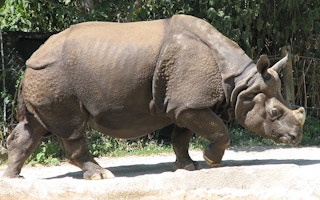On July 15 this year, activist Soneswar Narah stepped up to express his views in a public hearing on an upcoming bioethanol refinery.
The project, a joint venture between India’s state-owned Numaligarh Refinery Limited (NRL) and Finland’s Chempolis Oy, is slated to be built near Kaziranga National Park in India’s northeastern Assam state.
Many locals like Narah oppose the project, saying it will have harmful impacts on Kaziranga’s fragile ecosystem and is likely to intensify human-wildlife conflicts in the Numaligarh area, given its proximity to an elephant corridor.
During the public hearing, Narah said, the microphone was cut off before he could say “anything provocative,” and police barged in, dragging him away.
Narah was arrested by the Assam state police and charged with multiple crimes, including “attempt to murder,” “assault or criminal force to deter public servant from discharge of his duty,” and “criminal act done by several persons in furtherance of common intention.”
There are two starkly different versions of what exactly sparked Narah’s arrest.
According to the official minutes of the public hearing, approved by the local government and pollution control board, Narah, an adviser to the Kaziranga-based farmers’ and tribal rights advocacy group Jeepal Krishak Shramik Sangha, “comes to stage and started speaking against the project.
After that he took out the container containing combustible material which he tried to lit [sic] up in the stage which was protested by the public present and during the commotion police whisked him out of the venue as the situation became tense because of his act.”
Narah refutes the allegation, calling it “an attempt to muzzle dissent.”
“If I recall correctly, as Narah started expressing his concerns regarding the potential negative effects of the plant, police forcefully carried him offstage,” said Suchil Saikia, president of the local farmers’ organization Ponka Gramya Pothar Porichalona Samiti, who was also at the public hearing and corroborated Narah’s account.
Wherever the truth lies, the incident at the July public hearing highlights the tensions this project has created in one of India’s most politically and ecologically sensitive regions.
Jeepal has criticized the proposed biofuel plant on several grounds: potential negative impacts on the nearby Deopahar Proposed Reserve Forest and the greater Kaziranga ecosystem, as well as pollution-related hazards in nearby residential areas; irregularities in obtaining environmental clearance for the project; and the blocking of a critical elephant corridor.
The public hearing on the project was initially scheduled for May, but was delayed following a public outcry after NRL and the Assam State Pollution Control Board failed to adhere to statutory guidelines on conducting public hearings.
The meeting was originally scheduled for a working day without sufficient prior notice, and was not advertised in at least two major local newspapers, as required by India’s environmental law. Narah described the timing and lack of notice as “a bid to keep critics at bay.”
NRL’s public relations officials declined to comment to Mongabay about the scheduling of the meeting or other issues regarding the bioethanol plant.
Deopahar: “an integral part of Kaziranga ecosystem”
Conservationists fear the NRL-Chempolis bioethanol project will be ecologically disastrous.
The proposed refinery site is in the village of Owguri Chapori, just outside the Deopahar forest and only about 20 kilometers (12 miles) east of Kaziranga National Park, a World Heritage Site that is the global stronghold of the greater one-horned rhinoceros (Rhinoceros unicornis), and home to Bengal tigers (Panthera tigris tigris), wild water buffalo (Bubalus arnee) and numerous other threatened and endangered species.
The Deopahar forest is a 133-hectare (329-acre) patch of woodland hosting elephants and several rare species of felines, reptiles and butterflies.
Though officially recognized in 1999 as a “proposed reserve forest” by the Assam State Forest Department , it has still not been granted fully protected status.
“Deopahar is an integral part of the Kaziranga-Karbi Anglong ecosystem,” said Manoj Gogoi, a local conservationist and founder of Naturalists for Rehabilitation of Snakes and Birds (NRSB). He said the Kaziranga and Deopahar forests were all “one ecosystem” before human intervention led to fragmentation.
Gogoi said further habitat fragmentation and loss of forest cover in the Kaziranga-Karbi Anglong landscape must be stopped. During monsoon floods, when Kaziranga’s swampy lowlands are inundated, the park’s marooned wildlife seeks refuge in the neighboring Karbi hills, and sometimes migrates as far as the Deopahar wilderness.
“Deopahar forest provides shelter for the wildlife fleeing flood-affected Kaziranga National Park. There are instances when rhinos strayed out of Kaziranga [and] took shelter in Deopahar,” Gogoi said. “Deopahar is a crucial temporary habitat for Kaziranga’s wandering wildlife.”
Rohini Ballav Saikia, a Kaziranga divisional forest officer, denies that the project will have a direct impact on Kaziranga’s rhino population, saying Deopahar is not known to host rhinos; but he concedes such projects are not desirable in the proximity of a critical wildlife habitat.
This story was published with permission from Mongabay.com. Read the full story.










